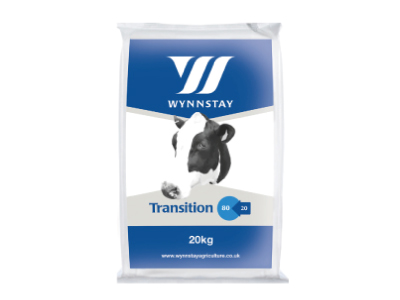80% of output and outcomes can be traced to 20% of inputs
80% of output and outcomes can be traced to 20% of inputs or activities (otherwise known as the Pareto principle). In dairy farming, a specific focus on inputs in the transition phase (the period three weeks pre- and post-calving) will lead to improved performance for the remaining 80% of the time. Some areas of performance that are directly linked to the success of the transition period include:
- Metabolic Diseases (Retained Placenta, Displaced Abomasum, Milk Fever etc)
- Immunity, mastitis and cell counts
- Fertility
- Lameness and mobility
- Milk production and therefore feed conversion efficiency and farm margins.
Ketosis and milk fever can be subclinical
Issues such as ketosis and milk fever can be subclinical, so whilst they are rarely treated for when present in this manner (due to the difficulty and invasiveness of diagnosis through blood tests), they will directly impact milking performance. Advancing nutrition and management in the transition period can solve issues that have never been diagnosed, but will directly impact production, efficiency, and margins.
Feed strategy - pre-calving
Initial feed strategy in the pre-calving period should prioritise high feed intakes, whilst restricting energy to maintenance values (usually around 100MJ depending on breed). This may appear counterintuitive (an increase in intake does increase total energy supply), however, research shows that high intakes in the pre-calving period carry across to early lactation. This additional intake reduces the energy deficit in fresh cows which improves overall cow and feed conversion efficiency, as well as reducing energy deficiency issues such as ketosis. A simple strategy to improve intake immediately post-calving is to supply a fresh calving drink such as Wynnstays Reviva 80:20. This will stabilise the calcium circulating in the bloodstream which leads to higher intakes.
Feed strategy - grazing
Feeding strategies for close up dry cows can include grazing standing hay for lower input herds, feeding a total mixed ration for farms with mixer wagon access, and offering forage and dry cow nuts where versatility is desirable.
Customer Testimonial
“We introduced Prepare Nuts last summer due to an issue with milk fever both clinical and subclinical. Since moving to prepare nuts we have virtually eliminated those issues and as a result, have less metritis after calving. We now have confidence in our cows due to calve, particularly older cows.” - Dominic Bloxham, Moors Covent - Prepare Nuts
Prepare 80:20 Nuts
Wynnstay’s Prepare 80:20 Nuts are designed to optimise nutrient supply in the transition phase to minimise health issues and maximise transition success. Key features and benefits include:
- High DUP from Soya and Protected Soya – Studies suggest high DUP in the close up dry phase increases milk production, milk protein and colostrum quality
- Rumen Protected Choline – Improves liver function by clearing fat from the liver. As a lot of internal processes depend on the liver (especially energy-based ones) energy supply to the cow improves and ketosis risk (clinical and subclinical) is reduced
- Magnesium and Ammonium Chloride – Ammonia salts encourage the cow to mobilise calcium from her reserves to reduce milk fever incidences.
- Highly palatable formulation – Core feeds are wheat, hipro soya, protected soya (all soya is sustainably sourced), rapeseed and molasses.












